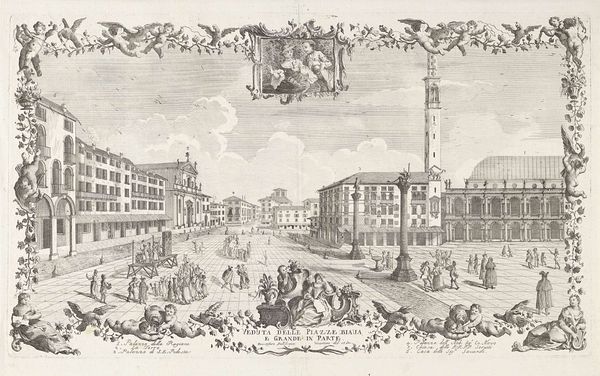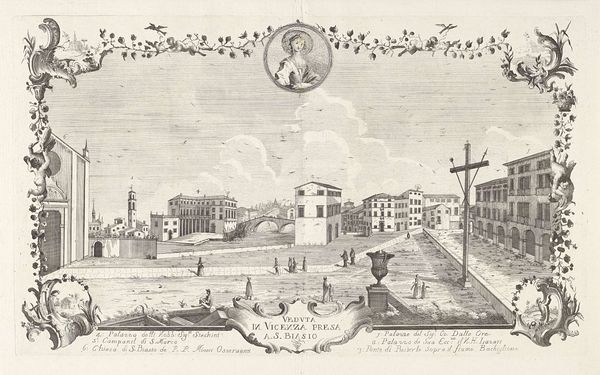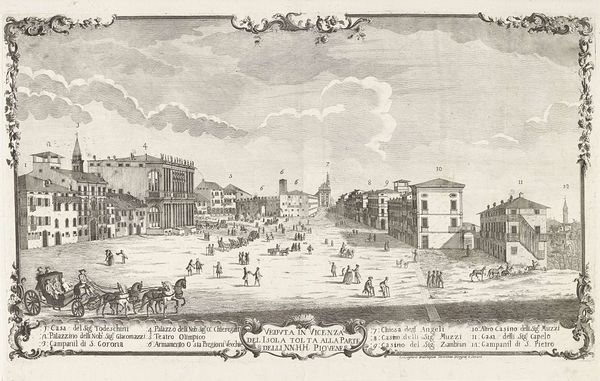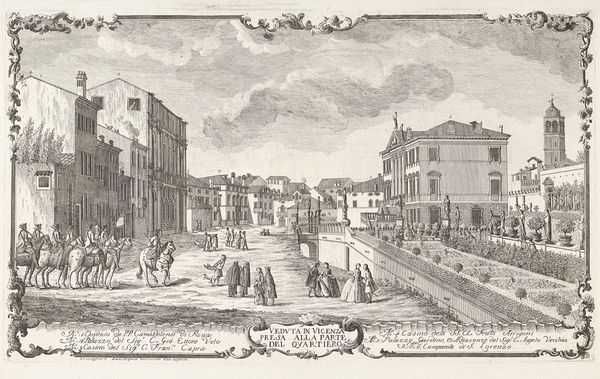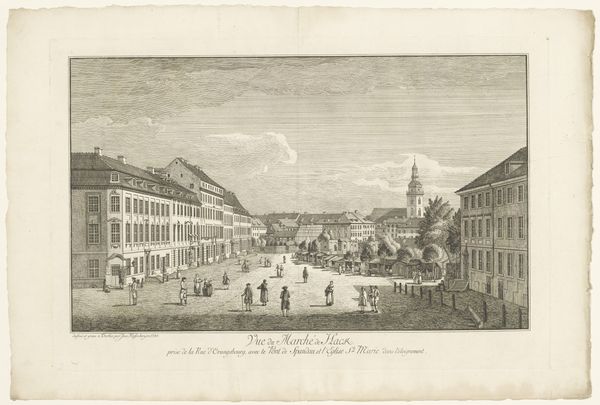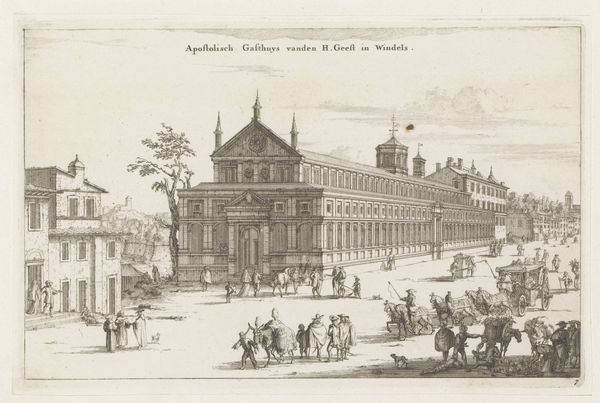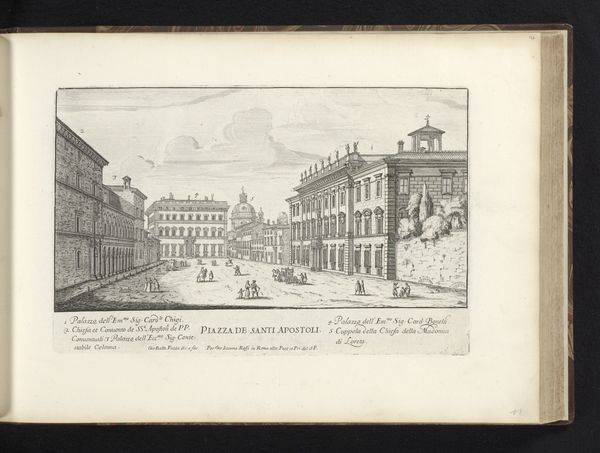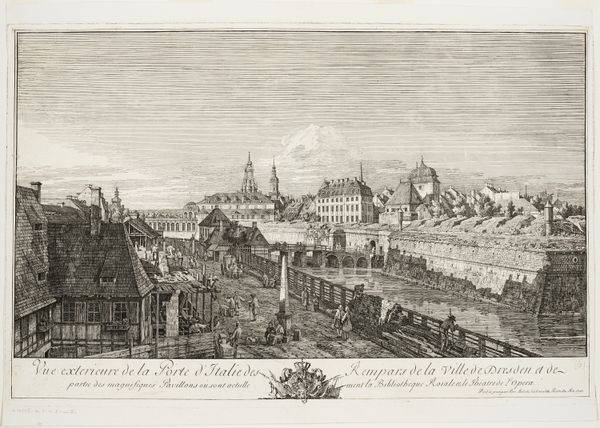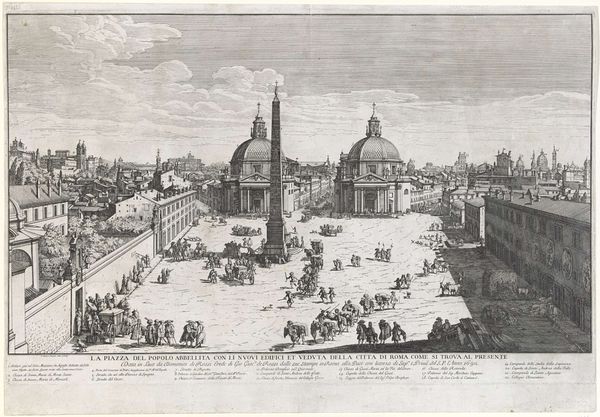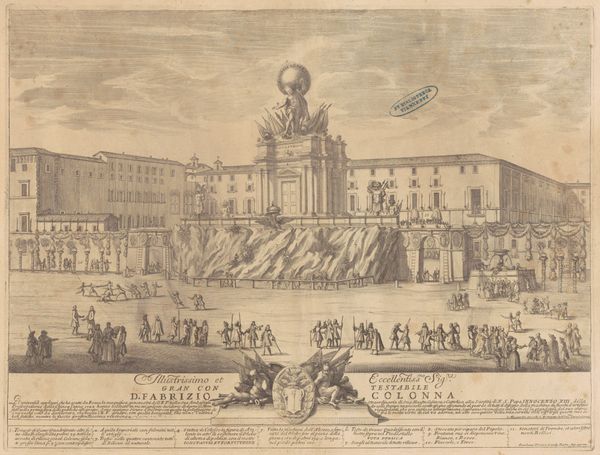
Dimensions: height 355 mm, width 595 mm
Copyright: Rijks Museum: Open Domain
Curator: Looking at Cristoforo dall' Acqua's engraving, "Piazza del Duomo in Vicenza," created between 1744 and 1787, I’m struck by its expansive emptiness, this stark contrast between the human figures scattered in the piazza and the imposing architecture surrounding them. Editor: Yes, it's a tableau that breathes significance. Those figures, seemingly dwarfed by the Duomo and surrounding structures, they almost seem like pieces placed in the grand theater of power and social order. What do we know of Vicenza during this period? Curator: The Veneto region experienced significant social and political tensions across the 18th century due to wealth inequalities, and it makes you consider how this engraving might be a silent commentary on those socio-economic issues playing out in plain sight within Vicenza's architecture, right? We get these figures from different classes just trying to cross paths, literally and perhaps metaphorically? Editor: That's interesting. From my perspective, the layout is like the structure of memory itself: layered and deliberately composed. The duomo, clearly a dominant symbol, has been an architectural feature in that town since antiquity, therefore, representing a kind of cultural repository for its residents. Consider also that, according to written clues in the engraving, it’s located next to sites of governance. Religious faith plus earthly law. Curator: And even with all these figures, who all appear able-bodied enough to take up arms if things boiled over, the authorities and clerics feel completely untouchable, in terms of compositional dominance. I think the artist makes choices so the population are not seen as one homogenous mass. It’s an astute document of people holding onto individual identities. Editor: The framing with cherubs and ornate decorations softens this depiction, and seems to point back toward an earlier style. Curator: Possibly alluding to a utopian future, in comparison to this imperfect now. The overall mood walks the line between nostalgia for past ideals, and a simmering unrest that history bore out in Europe, decades after. Editor: It’s in these visual paradoxes and layers that this engraving opens so many possibilities. It encapsulates Vicenza and an architectural space beyond just the scene depicted. Curator: It shows the power and limitations of a medium to hold a moment for examination, with figures crossing at disparate social vectors. Editor: An engaging window into 18th-century life, captured through its buildings, symbols, and their possible interpretations, it all remains profoundly evocative even today.
Comments
No comments
Be the first to comment and join the conversation on the ultimate creative platform.

